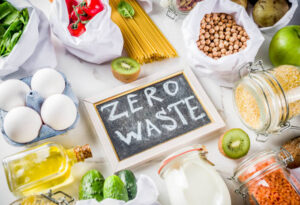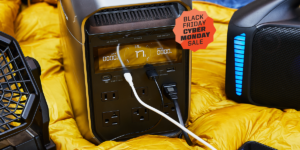How To Improve Water Quality In Your Home: 8 Easy Ways

Most people don’t realize the importance of water quality. Whether you drink it, bathe in it, or use it for cooking, it’s important to be clean and healthy. The problem is that many homes receive poor water quality due to a number of different factors.
It may be that you’ve been recently learning about this subject or are concerned about the water supply in your home.
Fortunately, there are practical steps you can take to improve the quality of your water, and this article will provide you with 8 easy ways to achieve precisely that.
What’s The Problem?
Not all of us live in ideal areas where we can just drink water straight from our tap without worrying about contaminants and pollutants entering our homes through the waterways. Water companies treat the water before it arrives at your home to make it safe to drink. As a result, it can contain chemicals such as chlorine, fluoride, and other contaminants.
Our water can also become polluted due to the presence of elements such as:
- Heavy metals, sediment, and carcinogenic (cancer-inducing) byproducts
- Arsenic, disinfection products, and nitrates from fertilizers
- Radiological contaminants and viruses
1. Check Your Plumbing
Your plumbing can play a role in how clean and safe your water is. You may need to replace your old plumbing and pipes if you experience rusty or smelly water, or if the water flows slowly. Check for leaks and drips around the faucets and pipes. This could help prevent water damage as well as saving money on your monthly utility bills.
You may want to consult a plumber if there are any cracks or breaks visible within any parts of your plumbing system.
If you need more information about issues with your water quality, it’s worth checking out the internet. People who visit WaterFilterGuru.com are usually those who want to learn about top innovative solutions and to read water filter and treatment system reviews. Specialist sites can also provide you with brand reviews and comparisons, popular guides, and articles.
2. Use Filtration Equipment
Pitcher water filters attach directly to your faucet so that when you turn on the tap, filtered water flows through. This type of unit will generally reduce the chlorine taste and odor, and reduce the presence of sediments such as rust or silt particles. It won’t get rid of lead or microorganisms such as bacteria or viruses, however.
Countertop filters are similar but they sit on your countertop rather than being attached directly to your faucet. Under-sink filters are installed under the kitchen or bathroom sink, and they can be more discreet due to the fact that they are hidden.
If you can afford it, you may wish to look into securing a whole house filtration system. This would provide you with the best filtration results for your whole property.
3. Avoid Bottled Water
Despite being convenient and easy to use at events or on the go, bottled water isn’t always a good option for your home. Often, this water is no better than tap water when it comes to safety – in fact, in some cases, bottled water is actually worse. Discarded plastic bottles also contribute to landfills and the general pollution of the environment.
Plastic bottles can leach harmful chemicals like BPA into their contents over time. This makes it far from ideal if you are drinking more water daily!
4. Test Your Well Water
Using well water can be better than the city or county tap water if it’s maintained properly. If you rely on a well for water, it is important to have it tested for contaminants.
However, many well water treatments are available to filter out the pollutants, including carbon filters and reverse osmosis.
Carbon is an effective treatment for removing many harmful chemicals from well water but it’s not so good at removing radon gas or other heavy metals like arsenic, selenium, or barium. For these elements, you’d need specialist filtration equipment.

Test your water, image source unsplash.com
5. Use Non-Toxic And Eco-friendly Products
Different chemicals are used in many common household items, whether they are cleaning supplies, beauty products, and more. These harmful toxins can leak into our water supply over time, so it’s important to be mindful about what you use on a daily basis.
Some non-toxic alternatives would be baking soda for scrubbing pots and pans or adding lemon juice with salt as an all-purpose cleaner. If you need to unblock a sink, try using a mixture of baking soda, salt, and vinegar before calling the plumber. An added plus is that these alternatives are kinder to the environment.
6. Dispose Of Your Hazardous Waste Responsibly
Some examples of hazardous waste are oil, antifreeze, paint, and chemicals. You should always dispose all these things in the proper way to keep your home safe. Never dump hazardous materials down a drain or on the ground. If you do it, you can contaminate your local water supply. The same thing could happen if you simply put these things in the trash, which is picked up by garbage collectors and taken to the landfill.
Hazardous waste is a serious issue with many consequences for the environment. You can dispose of most of these materials in an environmentally friendly way by taking them to specific collection points found locally.
7. Use A Reverse Osmosis System
This is a water purification technology that uses membrane filtration to remove minerals, chemicals, and other contaminants from drinking water.
It allows you to have clean, pure-tasting drinking water straight out of the faucet. You would experience this for up to six months before needing replacement filters (which are fortunately very affordable).
8. Use A Water Ionizing System
This is an advanced filtration method that removes chlorine, viruses, and microorganisms from the water to make it safer to drink. It can help eliminate the risk of bladder cancer by protecting you from being consistently exposed to high levels of carcinogenic toxins that are present in tap water.
Whilst our concerns about the quality of our drinking water are valid, it is reassuring to know there are so many possible solutions. By investing in the right equipment, we can safeguard both our health and the health of our families and visitors.







